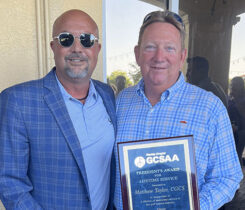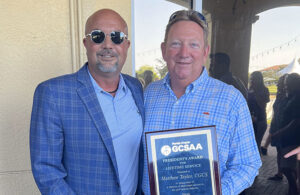State of the Profession Special Report
The golf course industry’s leaders, including GCSAA CEO Steve Mona and NGCOA CEO Mike Hughes, agree that the last thing the golf industry needs is more holes of golf dotting the country.
Hence, they believe that minus 26.5 net golf course openings in 2006 — the combination of course openings minus course closures — is healthy economic news for the industry.
But a question arises. Do fewer golf course openings — a trend for the past five years — mean there are less job opportunities for superintendents, assistant superintendents, club managers and other industry workers? On the surface, that’s the way it appears, but Mona doesn’t see it that way.
 Mona |
“People look at the industry and see that if 100 golf courses closed, that means 100 superintendents, club managers and pros must have lost their jobs,” Mona says. “But I don’t think that’s the case necessarily.”
Because a high percentage of the courses closing are not 18-hole facilities — most are alternative facilities, such as executive courses with pitch-and-putt venues that don’t employ full-time superintendents — not as many full-time superintendents are losing their jobs as thought, Mona says. Also, most of the new course openings are 18-hole facilities that employ full-time superintendents.
“Having said that, if we have net zero growth for the next five years, I’d be the first to admit that wouldn’t be good for our profession,” Mona says.
Charlie Fultz, superintendent of Shenvalee Golf Resort in New Market, Va., also doesn’t think that less golf course openings mean less jobs for superintendents. He says available jobs are still proportionate to when there were 200 course openings a year.
Fultz attributes that to so many superintendents who are fired because they can’t deliver the impeccable turf conditions demanded by owners and green committees. He also says there are more job openings for superintendents because many of them in their 50s are ditching the profession to work in other parts of the industry, such as sales.
Editor’s note: This story appears as part of February’s Golfdom Report, an annual look into the state of the profession.












